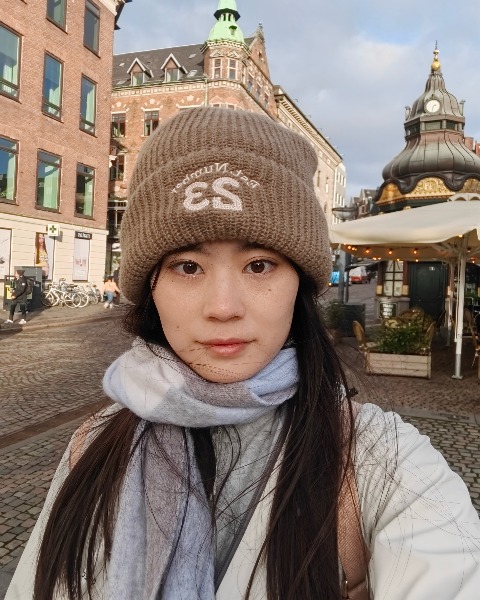Screening Applications & Diagnostics
Poster Session A
(1152-A) Single Cell Antibody Discovery Based on Active-matrix Digital Microfluidics Platform
Tuesday, May 28, 2024
16:30 - 17:15 CEST
Location: Exhibit Hall

Hu Chenxuan
PhD student
University of Science and technology of China
Suzhou, Jiangsu, China (People's Republic)
Poster Presenter(s)
Abstract: Single B cell technology provides a powerful and versatile platform for studying the diversity, dynamics, and function of B cells at the single-cell level. Microfluidics (MF) tools play animportant role in antibody discovery. Active-matrix (AM) electrowetting-on-dielectric (EWOD) based digital microfluidics (DMF) is a highly automated technology which can manipulate discrete liquid of micro-/nano- liters in large array. In this work, we presented a proof-of-concept experiment for single cell antibody discovery on the AM-DMF platform.
Hybridoma cells are used to conduct principle verification experiments on identifying antibodies. Two hybridoma cell samples are labelled with two kinds of proteins, Re and CD25, respectively. Re labeled hybridoma cells and CD25 labeled hybridoma cells are stained with CFSE (green) and Alexa Fluor 647 (red) fluorescent dyes respectively in advance. The two samples are mixed for cell sample input. The protein G microbeads (MBs) reagent is mixed with fluorescence-labelled Re-antigen for antigens coupling. After successful coupling, the specific binding of Re-antibody with the antigens will activate the fluorescent site on the antigen. The fluorescence signal can be identified with red channel under the fluorescence microscope. First, the mixing cell sample of Re labeled hybridoma cells and CD25 labeled hybridoma cells are loaded onto the DMF platform. The droplet-based single cell isolation is conducted with the continuous “one-to-two” splitting. After automatic splitting on cell sample, the sub-droplets are screened one by one to select the droplets containing only a single cell. After sorting out the droplets with a single cell, the MBs reagent is injected onto the platform, then splitted into sub-droplets of the same volume with the cell droplets. Each MBs droplet is then dispensed to merge with each droplet containing a single cell. The merged droplets are moved for several times for well mixing. After the reaction of incubating under 37 ℃ for 3 hours, the platform is detected under a fluorescence microscope. MBs conjugated with target Re-antibodies show red fluorescence under the microscope, and show no fluorescence signals without successful conjugation. Meanwhile, the target Re labeled hybridoma cells show green fluorescence while the CD25 labeled ones show red fluorescence.
Therefore, the fluorescent color of the companying single cell can revalidate the fluorescence detection. Finally, the single cells screening the target antibody are sorted out. These droplets are output from the chip for afterward analysis. Each sample will be detected with PCR for indicating the presence of the bands on the gel. The samples with the target bands will be output for sequencing to confirm the cell type.
In the future, the platform is promising to realize the whole workflow of single B cell antibody discovery. The workflow can integrate the processes of single cell isolation, culturing, molecule detection for target cell identification, and further detection. The cells with the capability of screening target antibodies can be sorted out for further research on antibody drug development.
Hybridoma cells are used to conduct principle verification experiments on identifying antibodies. Two hybridoma cell samples are labelled with two kinds of proteins, Re and CD25, respectively. Re labeled hybridoma cells and CD25 labeled hybridoma cells are stained with CFSE (green) and Alexa Fluor 647 (red) fluorescent dyes respectively in advance. The two samples are mixed for cell sample input. The protein G microbeads (MBs) reagent is mixed with fluorescence-labelled Re-antigen for antigens coupling. After successful coupling, the specific binding of Re-antibody with the antigens will activate the fluorescent site on the antigen. The fluorescence signal can be identified with red channel under the fluorescence microscope. First, the mixing cell sample of Re labeled hybridoma cells and CD25 labeled hybridoma cells are loaded onto the DMF platform. The droplet-based single cell isolation is conducted with the continuous “one-to-two” splitting. After automatic splitting on cell sample, the sub-droplets are screened one by one to select the droplets containing only a single cell. After sorting out the droplets with a single cell, the MBs reagent is injected onto the platform, then splitted into sub-droplets of the same volume with the cell droplets. Each MBs droplet is then dispensed to merge with each droplet containing a single cell. The merged droplets are moved for several times for well mixing. After the reaction of incubating under 37 ℃ for 3 hours, the platform is detected under a fluorescence microscope. MBs conjugated with target Re-antibodies show red fluorescence under the microscope, and show no fluorescence signals without successful conjugation. Meanwhile, the target Re labeled hybridoma cells show green fluorescence while the CD25 labeled ones show red fluorescence.
Therefore, the fluorescent color of the companying single cell can revalidate the fluorescence detection. Finally, the single cells screening the target antibody are sorted out. These droplets are output from the chip for afterward analysis. Each sample will be detected with PCR for indicating the presence of the bands on the gel. The samples with the target bands will be output for sequencing to confirm the cell type.
In the future, the platform is promising to realize the whole workflow of single B cell antibody discovery. The workflow can integrate the processes of single cell isolation, culturing, molecule detection for target cell identification, and further detection. The cells with the capability of screening target antibodies can be sorted out for further research on antibody drug development.
